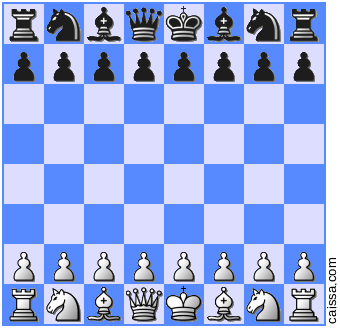1. c4 e5
2. e3 Nf6
3. g3 d5
4. Nc3 d4
5. exd4 Qxd4
I started with the English Opening. My first three moves were pawn moves that opened up lines for development and left me in a flexible position. He then made a bid for the center with a push of the d-pawn. I scooped it up after a developing move and wasn't expecting him to take it back with his queen.
6. Nge2 Qxc4
7. Bg2 Bc5
8. Qa4+ Qxa4
9. Nxa4 Bd6
10. O-O O-O
I obliged him with chasing his queen around. Looking back I think 6. Nf3 would have been stronger by limiting the queen more, but at the time I had an interest in controlling f4 and d4. I then fianchetto'd to gain a stronger hold on the center before forcing an exchange of the queens. I wasn't too concerned about losing mine in the exchange if it was a piece that he favoured heavily. At the end of the exchange, I feel that I was in a better position development-wise - his queenside is pretty much inactive and his bishops aren't on the best diagonals.
11. d4 c6
12. Re1 e4
13. Bf4 Bb4
14. Red1 Re8
15. Nec3 b5
I then made a push for center occupation with the d-pawn, defended by my knight on Ne2. I then slid my rook behind my knight (for defense and possible discovered attack later) and got my bishop out on the f4 square. He went after my rook with his bishop... I should have seen that coming, but I managed to interpose my knight which was defended. I'm good with losing a knight for a bishop when things are starting to open up.
16. Nc5 Bg4
17. Re1 Rd8
18. N5xe4 Bxc3
19. bxc3 Nxe4
20. Bxe4 Bd7
He was attacking my knight with his b-pawn, but made a great little outpost for me to jump to. He attacked my rook with his bishop, forcing me to move it and then he eyed his rook down on my d-pawn. I wasn't too concerend - I took out his central e-pawn with my outposted knight. He couldn't take the square back without loosing that knight, and he took my other knight with his bishop. Good with me - as I said I like bishops for knights as things are opening up, and he was looking to remove a defender of e4. He took it with his knight, but my fianchetto'd bishop nailed him.
21. Re3 a5
22. Rae1 Na6
23. d5 cxd5
24. Bxd5 Ra7
25. Re7 Rf8
I then made a rook lift so that I could later double up on them. He was trying something on the flank. I then pushed my d-pawn up more attacking his c-pawn and opening things up for the bishop pair to spear his rook if I got a chance. I then parked my rook on the 7th... always a good place to sit.
26. Be3 Rc7
27. Bb6 Rcc8
28. Rxd7 Rxc3
29. Rxf7 Rxf7
30. Re8#
I then chased his rook with my bishops to get him to move to the back rank so I could take his bishop. When his rook took c3, it was game over!

No comments:
Post a Comment